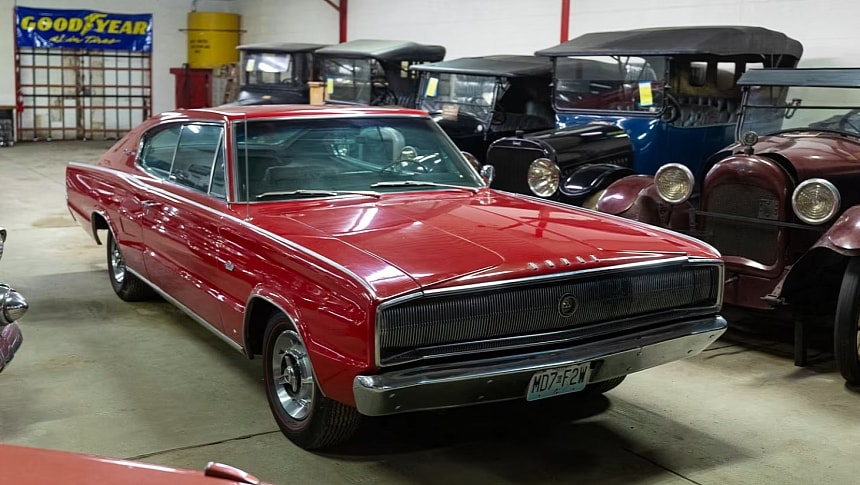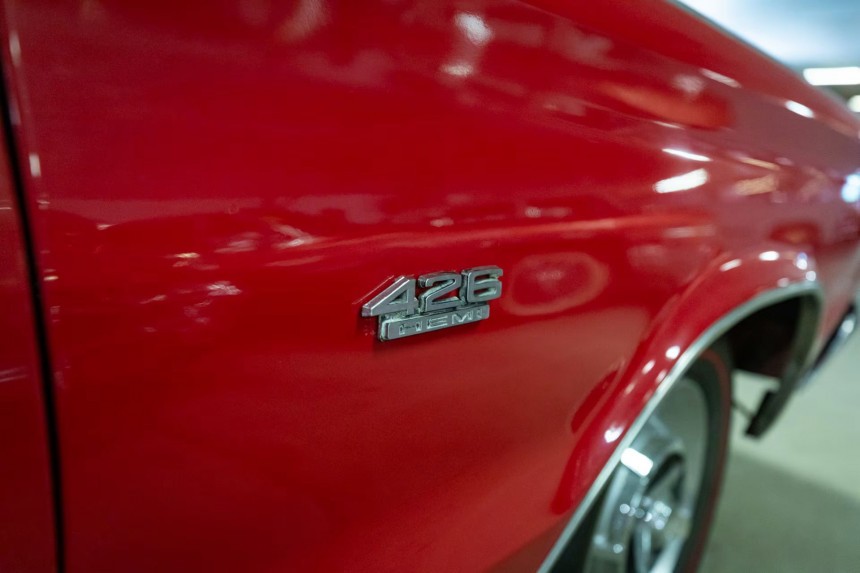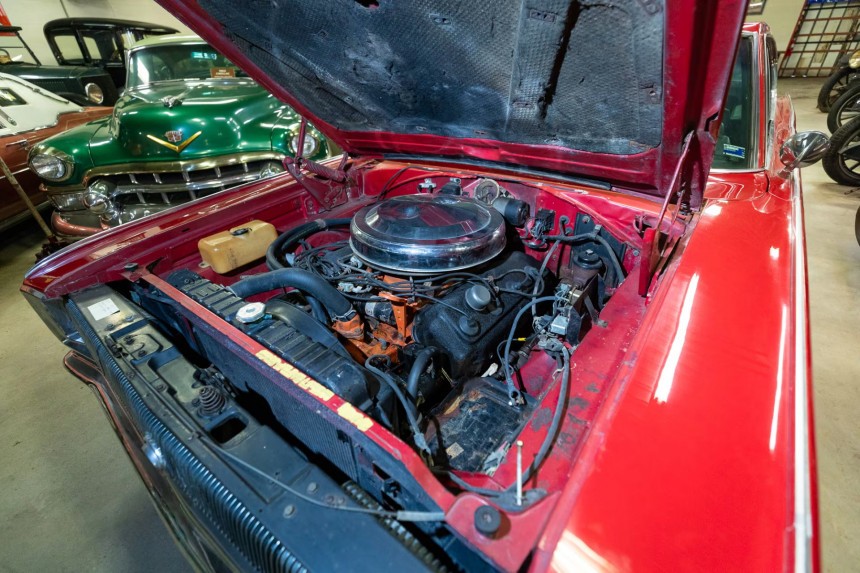In 1966, interesting things happened in Detroit: the 427 big-inch big-Block V8 made landfall in the Corvette; Ford smacked Ferrari over the Le Mans laurels with the GT40; and the Street Hemi was released to the general public. It wasn’t the only gift Mother Mopar made to its beloved piston-headed fanatics: the Dodge Charger took the stage.
The Chrysler automobile wasn’t a tremendous success despite its sleek fastback profile and luxurious interior with four individual bucket seats (the rear ones flat-folding). But it did garner enough attention to keep going for the upcoming years. Best of all, it could be optioned with 426 cubic inches of internal combustion ignited from the dome-shaped heads, delivering 425 horses and 490 lb-ft of torque (431 PS, 664 Nm).
Chrysler Corporation wasn’t an all-loving mother and favored the Plymouth division over the other names in the family. Consequently, out of a 2,729-block production run, the Street Hemi was split unevenly between Dodge (1,168) and Plymouth (1,561). Two models from each brand would be granted the right to sport the fabulous motor: the Coronet and the Charger in the Dodge corner, the Belvedere and the Satellite for Plymouth’s honor.
468 first-generation Chargers were ordered with the rowdy hemispherical-heads V8, contrasting with the 700 Coronets that came off the line in full fighting guise. But here’s the catch: the Charger’s production run accounted for only 37,344 examples, vastly outnumbered by the quarter-million Coronets released that year. For percentages lovers, that’s 1.25% of the Chargers and 0.28% of the Coronets.
Despite the model’s unconvincing popularity, the first-generation Charger received the lion’s share of the total Street Hemi production, with 468 copies in 1966 and 118 assembled in 1967. By comparison, the most emblematic Charger of them all, the 1968-1970 generation, didn’t fare much better despite a massive increase in production numbers.
Out of a total of more than 227,585 Chargers assembled for the 1968, 1969, and 1970 model years, only 912 cars got the 426 cubic-inch (7.0-liter) V8 engine. That’s less than half-percent (0.40%, to be specific).
586 out of 53,132 first-gen Chargers were Hemi cars – 1.1% - is a far better ratio, but that’s a false positive, given the absolute figures. To add to the disappointment, the first-generation Hemi Chargers reach nowhere near the values of a fabled example built between 1968 and 1970. The highwater mark for these gems was set by a $145,000 example sold last September by the original owner.
Speaking of September, two months from now, in Dallas, another first-year Dodge Charger Hemi is coming on the market at the Texan auction. It’s one of the 250 H-code Chargers (the dual-quad 426 V8 designator) with a four-speed manual transmission. The vehicle's history is unknown, but the few pictures on the auction site show what appears to be an original engine bay and interior and probably a refreshed exterior livery.
The odometer shows 45,720 miles (73,579 kilometers), and the seasoned interior backs that number. However, the fender tag is missing, and the scarce information doesn’t say if this car was born with the current Hemi (or with a 426 V8 at all) or has been upgraded somewhere along the line. The car is going under the gavel on September 6, 2024, and it will probably not set any records.
Chrysler Corporation wasn’t an all-loving mother and favored the Plymouth division over the other names in the family. Consequently, out of a 2,729-block production run, the Street Hemi was split unevenly between Dodge (1,168) and Plymouth (1,561). Two models from each brand would be granted the right to sport the fabulous motor: the Coronet and the Charger in the Dodge corner, the Belvedere and the Satellite for Plymouth’s honor.
468 first-generation Chargers were ordered with the rowdy hemispherical-heads V8, contrasting with the 700 Coronets that came off the line in full fighting guise. But here’s the catch: the Charger’s production run accounted for only 37,344 examples, vastly outnumbered by the quarter-million Coronets released that year. For percentages lovers, that’s 1.25% of the Chargers and 0.28% of the Coronets.
Out of a total of more than 227,585 Chargers assembled for the 1968, 1969, and 1970 model years, only 912 cars got the 426 cubic-inch (7.0-liter) V8 engine. That’s less than half-percent (0.40%, to be specific).
586 out of 53,132 first-gen Chargers were Hemi cars – 1.1% - is a far better ratio, but that’s a false positive, given the absolute figures. To add to the disappointment, the first-generation Hemi Chargers reach nowhere near the values of a fabled example built between 1968 and 1970. The highwater mark for these gems was set by a $145,000 example sold last September by the original owner.
The odometer shows 45,720 miles (73,579 kilometers), and the seasoned interior backs that number. However, the fender tag is missing, and the scarce information doesn’t say if this car was born with the current Hemi (or with a 426 V8 at all) or has been upgraded somewhere along the line. The car is going under the gavel on September 6, 2024, and it will probably not set any records.
















